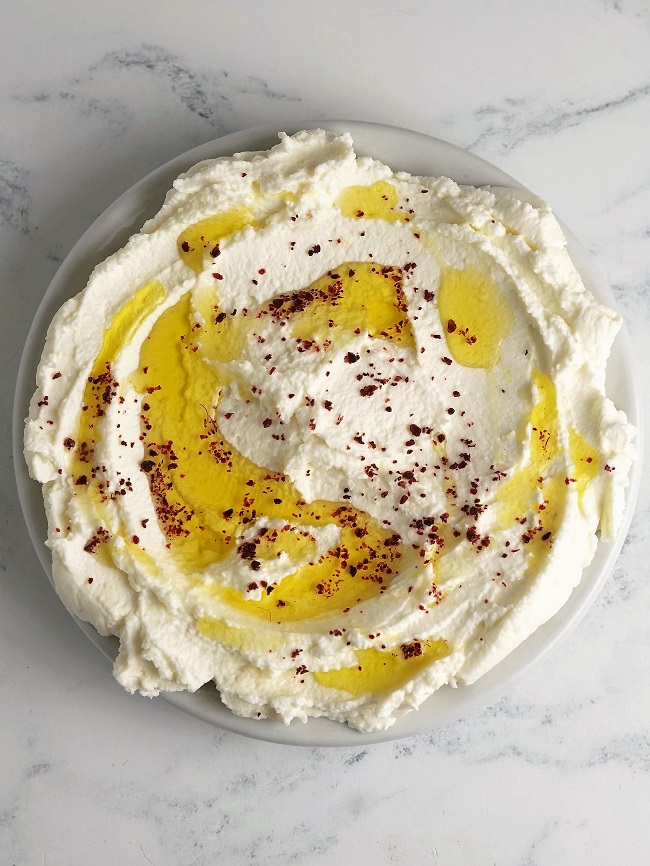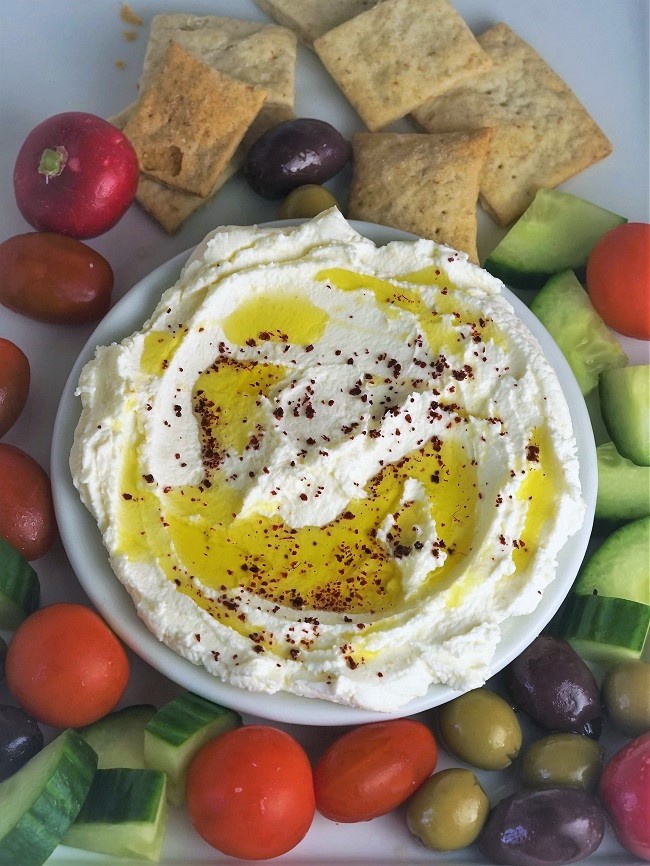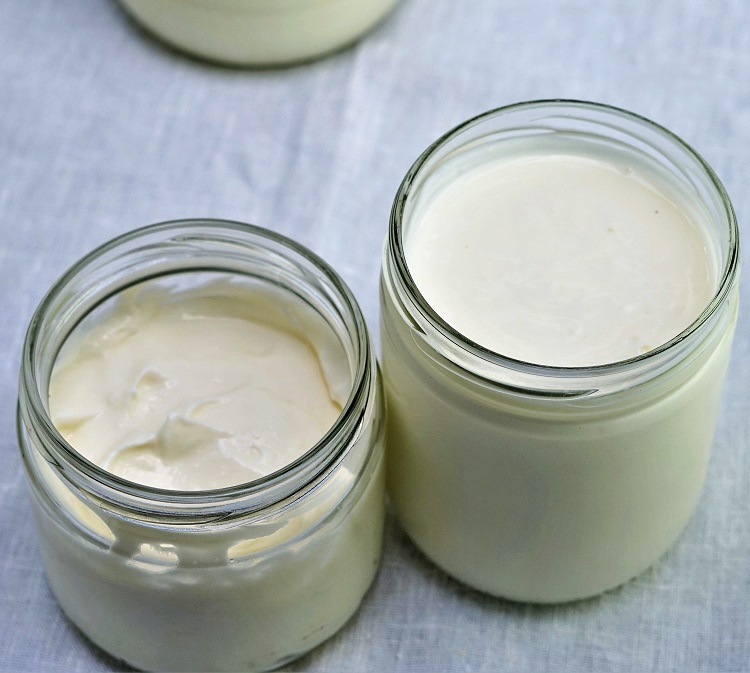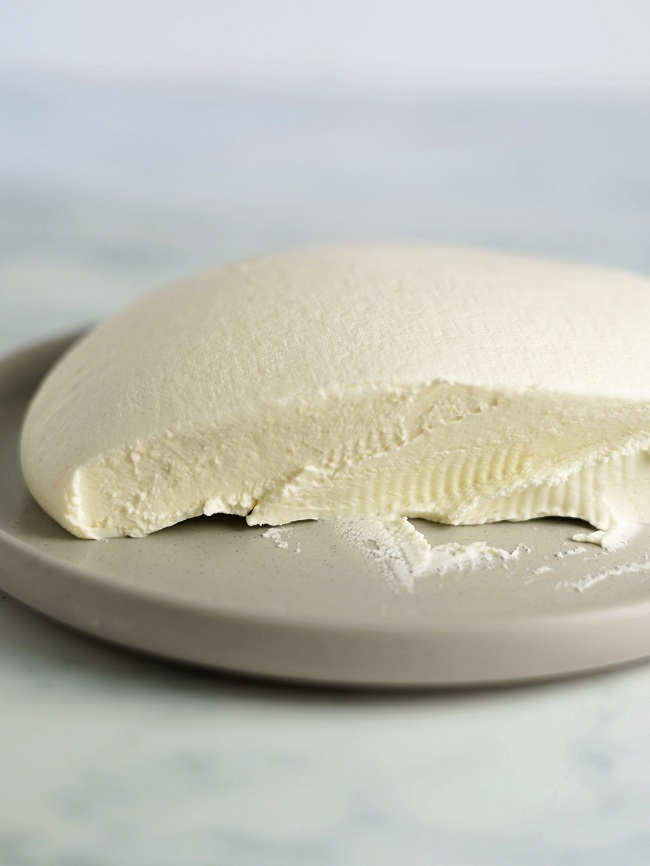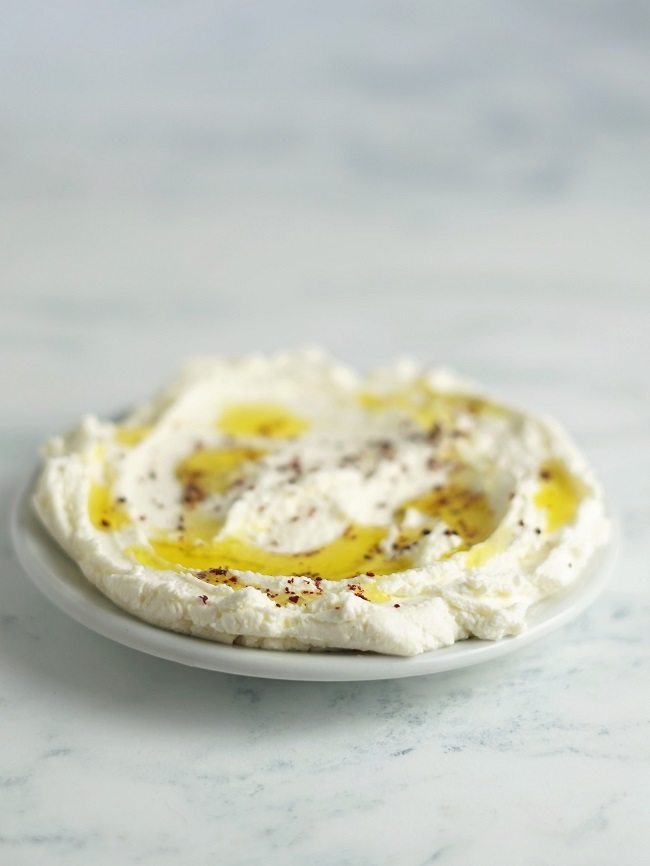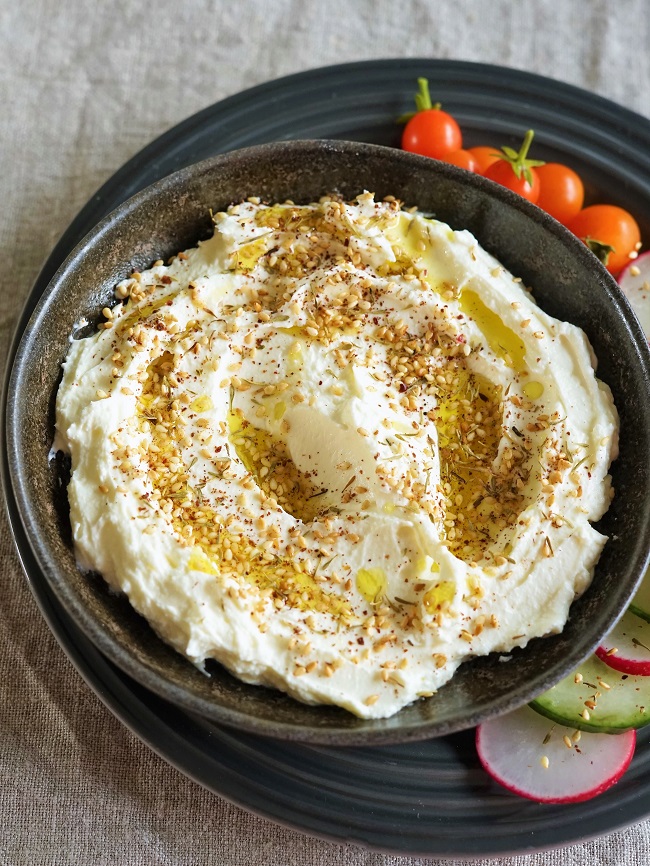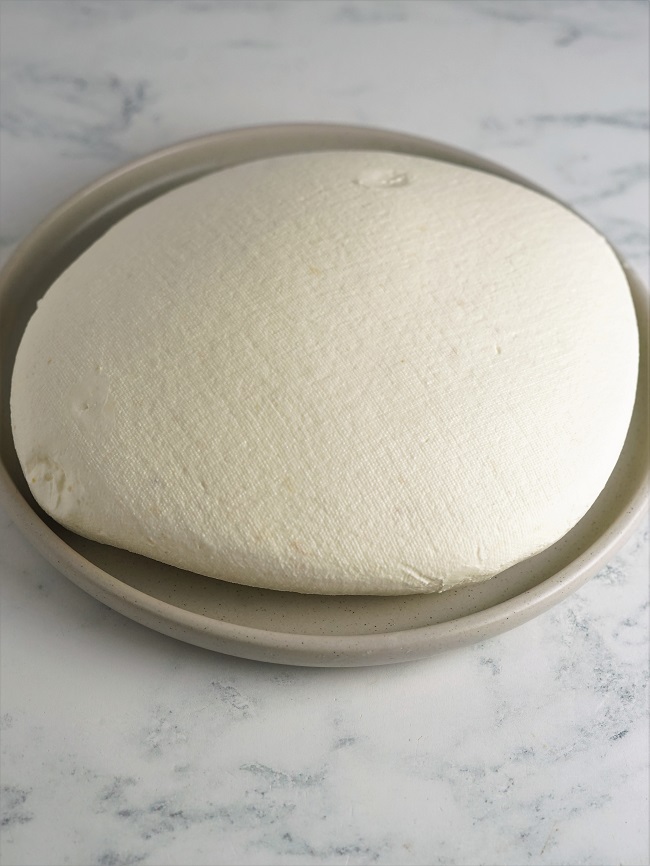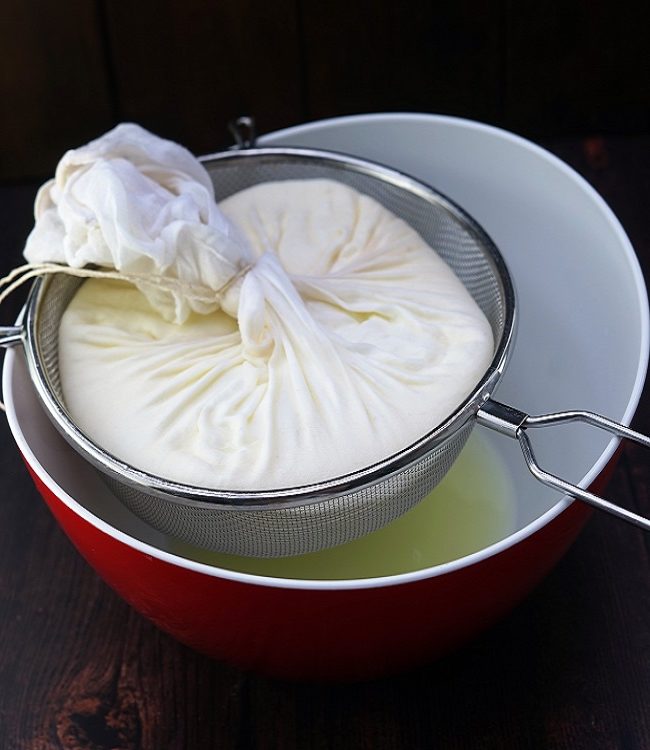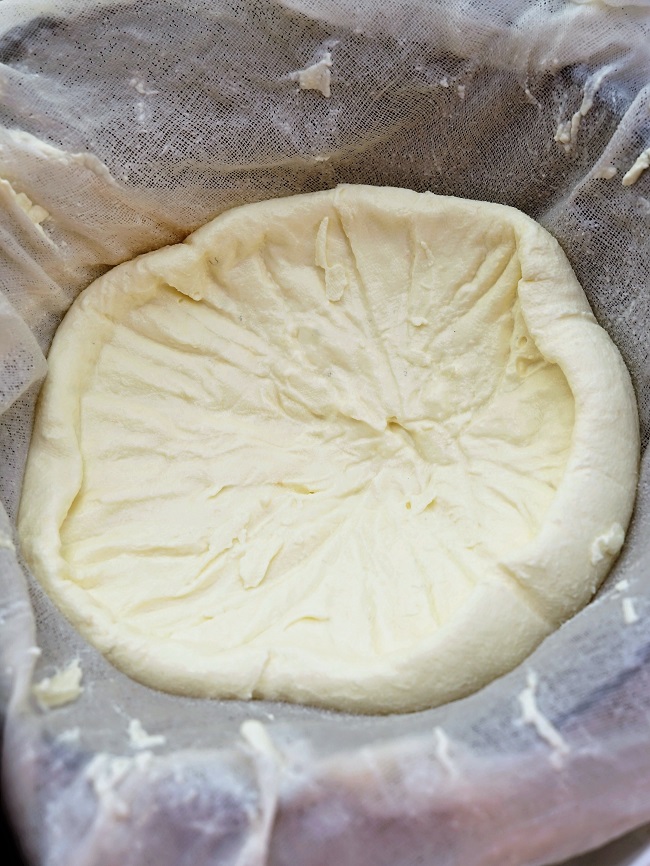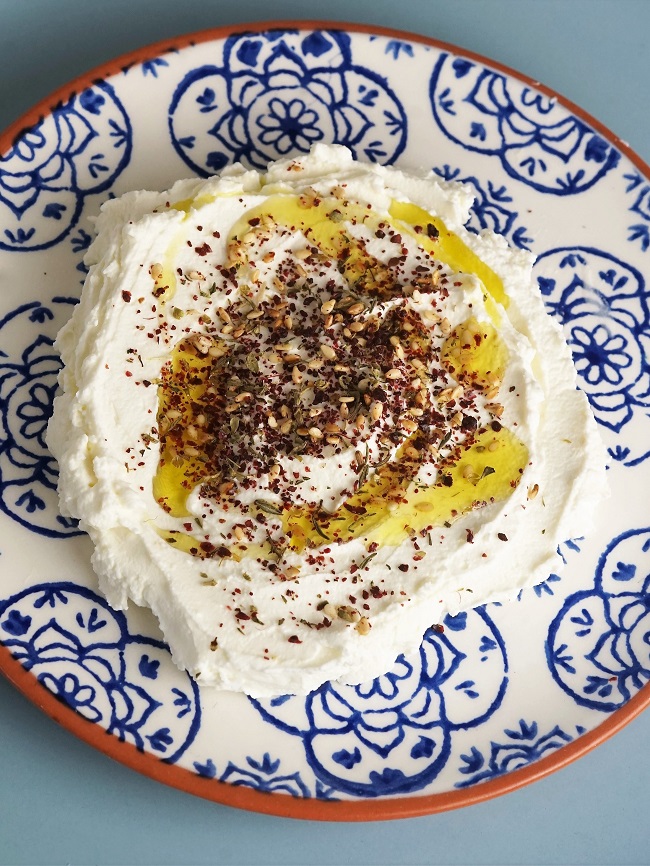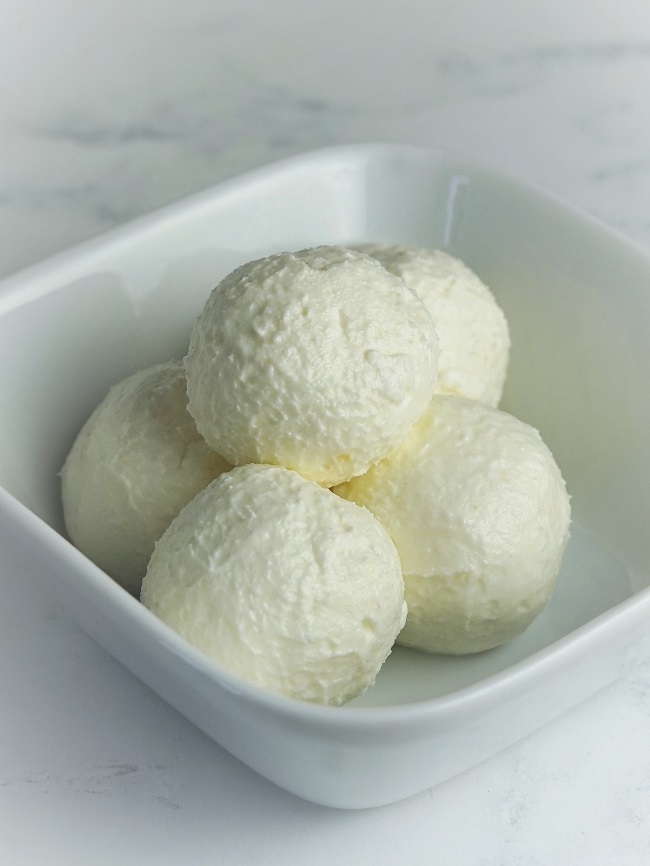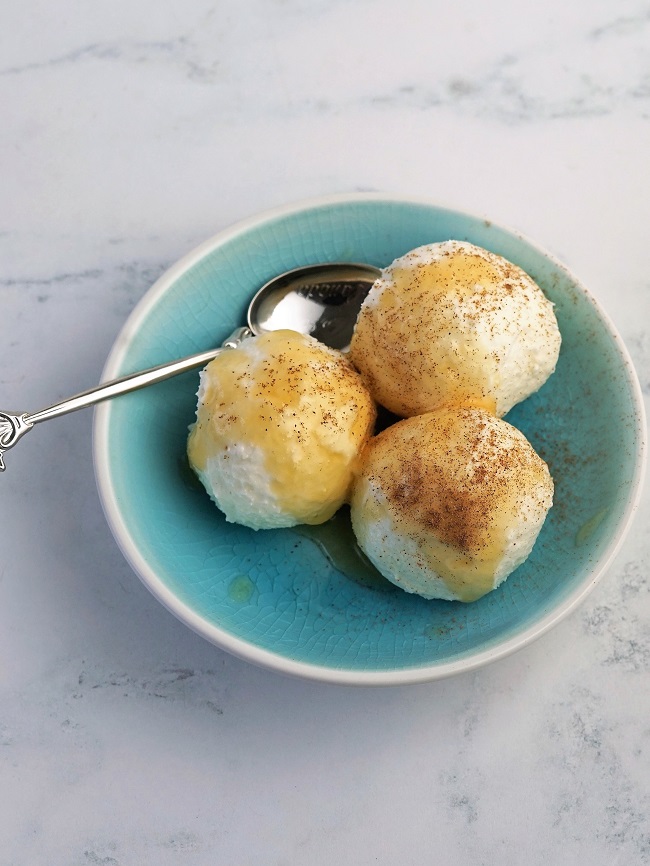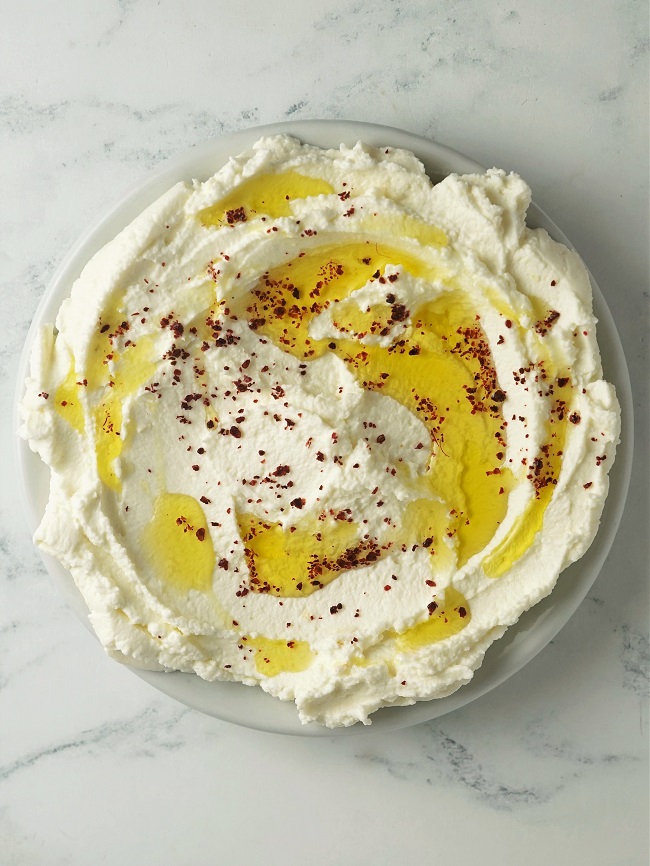Labneh: homemade yogurt cheese
Labneh is a creamy, Middle Eastern style yogurt ‘cheese’ that’s easily made at home.
All you do is strain plain, full-fat yogurt for 24-hours until it’s rich and soft like cream cheese.
Great for spreading or dipping into, you can flavour it how you like and serve as part of a mezze style meal.
I like labneh with a drizzle of olive oil and a sprinkle of sumac or za’atar spices, accompanied by vegetable crudites, crackers or flatbread.
Jump to Recipe
When you’ve made something yourself, rather than picking it off a supermarket shelf, I think you treat it with much more respect. If you make your own bread, I expect you’ll know what I mean.
That’s certainly true since I began making by own yogurt about a year ago.
After realising that I could strain some of it to make thick, Greek-style yogurt, I soon started to take it a step further and make labneh, the Middle Eastern-style yogurt ‘cheese’.
But you certainly don’t have to make your own yogurt to turn it into creamy labneh. Any plain, full fat yogurt will work so it’s fine to use shop bought.
If you don’t make your own yogurt, I recommend buying a Greek-style one for labneh if you can.
LABNEH
Labneh, sometimes spelled labnah or labna, seems to be eaten all over the Middle East, whether as a snack, breakfast or as part of a mezze of small dishes.
If, like me, you fell in love with beautiful, bittersweet TV drama Shtisel (about an ultra-Orthodox family in Jerusalem in which food features a lot), you may have seen father and son Shulem and Akiva spreading labneh on bread for breakfast, often eating it with tomato and cucumber salad.
I like it this way too, sometimes toasting the bread and putting tomatoes and cucumber on top.
Although labneh is often referred to as yogurt cheese, strictly speaking it isn’t a cheese at all.
As I learned after spending a day with the Staffordshire Cheese Company, the bacteria used to sour and thicken milk which turns it into yogurt is completely different to that which makes cheese.
Nevertheless, when you’ve strained off lots of the whey (that’s the liquid part of yogurt) the labneh does have the texture of soft cheese.
MAKING LABNEH
You may be pleased to know that the only skill you need in making labneh is patience.
That’s because, to get a nice thick, creamy yogurt cheese, you’ll strain yogurt for 24 hours.
To do this, you need a clean piece of cheescloth or muslin. These are not expensive: usually £3-£5 for a 50 x 50 cm muslin square or an enormous piece of cheesecloth. Both can be washed, so you can use them over and over again.
Some people will tell you to set up a contraption involving hooks hanging from kitchen cupboards or from your sink. Fine if you don’t need to use your sink or worktop for a day. And you’re not in the middle of a heatwave.
But I find the easiest way is to line a sieve with your cheesecloth or muslin and place it over a large bowl. Next, spoon in the yogurt, then draw the ends together and secure with a piece of string.
Some people add salt to the yogurt first, but I don’t think it’s necessary. You can always season the labneh later, depending on how you want to eat it.
The whole lot can then go in the fridge and you don’t need to think about it for another 24-hours.
Actually, that’s not strictly true. At the start, a lot of pale yellow-coloured whey will collect in your bowl and it’s best to remove it. Otherwise the bottom of your bundle may end up sitting in the whey. And it’s not going strain like that is it?
BUT, PLEASE, DO NOT THROW THE WHEY AWAY!
Sorry for shouting, but whey is a wonderful cooking ingredient. Use it in bread doughs to add subtle flavour, and in scones and other baking instead of buttermilk. A source of protein, you can even add whey to smoothies.
I pour the collected whey into a used instant coffee jar (properly washed, of course) and keep it in the fridge. If you’ve more whey than you think you’ll use within 4-5 days, just put the whey in a suitable container and freeze.
Anyway, back to the labneh.
After 24 hours, you’ll have lovely, thick yogurt cheese.
Exactly how much labneh you end up with depends on the yogurt you started with.
More whey will have dripped out of a thinner yogurt, so you’ll have less labneh. A thicker, Greek-style yogurt has already had some whey drained out before you bought it so, weight for weight, you should end up with more labneh.
SERVING LABNEH
In some parts of the Middle East, a classic accompaniment to labneh is za’atar.
Said to originally be the Arabic name for an ancient herb, these days za’atar is more commonly known as a spice, sesame and herb mix containing sour-ish, lemony sumac.
You can buy za’atar quite widely, but here I show you how to make your own za’atar. I think creamy labneh and tangy, herby, nutty za’atar is a great combination.
If you don’t have za’atar, then just sumac sprinkled over is good. Or use cumin or paprika if you like.
The labneh should be fine for up to five days in the fridge, but there is a way of keeping it for longer. Just roll into balls, pack into a jar or other container, and cover with extra virgin olive oil. These should keep at least a month in the fridge.
It’s also rather nice to serve the labneh as balls rather than spread on a plate: especially with a few little extras sprinkled over the top.
Here there’s chilli flakes, cumin, paprika, black pepper and coriander leaf.
You don’t even have to stick to savoury flavours: pour over your favourite sweet syrup (honey, maple, date etc.) and add a sprinkle of cinnamon.
With a drizzle of my homemade Dandelion Syrup plus cinnamon, this labneh made an incredibly good, super-fast dessert.
If you love the tart creaminess of Greek-style yogurt in a savoury or sweet guise, I think you’ll REALLY love labneh.
And with next to no work involved, why not get started?

Labneh: homemade yogurt cheese
Middle Eastern yogurt 'cheese' to serve with pitta bread, raw vegetables or part of a mezze meal.
Ingredients
- 500 g plain yogurt if not homemade then Greek style if possible
- 1 pinch salt optional
To serve (optional)
- extra virgin olive oil
- za'atar spice mix
- sumac
Instructions
-
If using the salt, stir it into the yogurt.
-
Line a large sieve with a piece of muslin, cheesecloth or other fine cloth.
Place the sieve over a large bowl.
-
Spoon the yogurt into the lined sieve.
Bring the ends of the cloth together and tie, using string if necessary.
-
Place everything in the fridge and leave for 24 hours.
Recommended: once or twice, remove the whey that's collected in the bowl to ensure that the bottom of the sieve isn't touching it.
The whey can be stored in a jar in the fridge and used instead of water in bread doughs, buttermilk in scones, added to smoothies etc.
-
Remove the labneh from the cloth and store in a clean container in the fridge.
Should keep for up to 5 days.
To store for a month: roll into walnut-sized balls, place in a container and cover with olive oil.
-
To serve: eat with bread or spread over a small plate, drizzled with olive oil and za'atar or sumac.
If you like this recipe, try Turkish Eggs with Garlic Yogurt (Çilbir)

